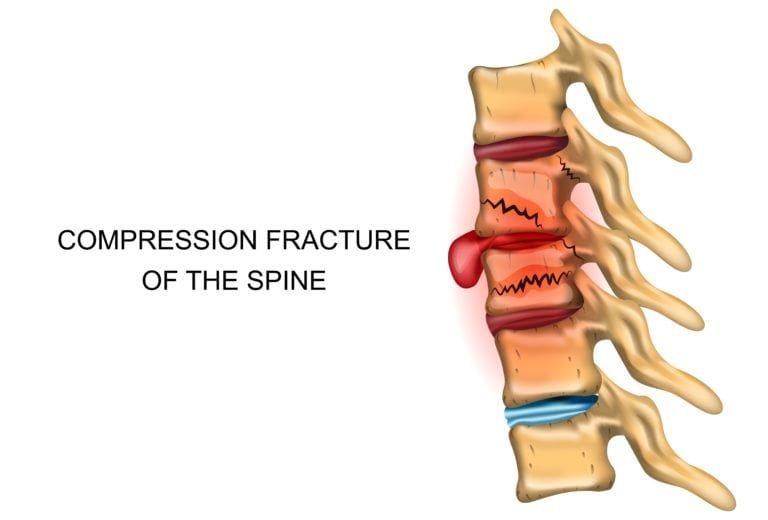How To Prevent Compression Fractures

Compression fractures are a concern for those who are losing density in their bones, a condition that is common in women who are in post-menopause and aging men. These fractures occur as a result of collapsing or compressed vertebrae in the spinal column. When this is happening its possible for compression fractures to form, and they can seriously impact the patients quality of life and ability to function overall.
What Can I Do To Prevent Compression Fractures?
Thankfully there are a number of activities you can do to help strengthen your bones and hold off the onset of deteriorating bone. Taking part in these won’t stop it altogether, but it will help hold off the loss of bone density and the compression fractures that can result from it.
1. Engage in Resistance Training – Every day you should do something akin to yoga or weight-training to help strengthen your bones. Those who participate in yoga have been shown to have greater bone density at later ages than those who don’t.
2. Weight-Bearing Exercise – Walking, running, hiking, anything that puts pressure on your bones and encourages them to produce additional bone cells to support your weight. Low-impact options are available so long as they require you to work against gravity.
3. Check Your Vitamin D – Every day you should be getting between 50-100mg of Vitamin-D, as well as getting plenty of sunshine. 15-30 minutes of sun each day combined with a supplement will ensure your bones have everything they need to grow strong.
4. Calcium too! – It should come as no surprise that you’ll need plenty of calcium in your diet as well, with women needing at least 1200-1500mg. Don’t try to do this all with a supplement though, no more than 600mg should come from a vitamin. Eat healthily and drink milk to make sure you get enough.
5. Bioidentical Hormone Replacement – This isn’t exactly an activity, but it is a way of encouraging the body to produce more bone by replacing the hormones it has lost. This isn’t always a viable option for all patients, but for those who are eligible for this form of treatment, it can make a huge difference. Which type of hormone replacement you’ll be given depends largely on where you’re losing the most bone, as different hormones build bone in different area.
6. Bone Density Imaging – Again, not an activity but a vital diagnostic technique you can get from your osteopath. These images will reveal the density of your bone and allow your physician to know what kind of action is necessary to protect your bone health.
Following this short guide will help you retain healthy bones longer, and be aware of any risks you may be experiencing from degenerating bone. If you want more information about protecting your bone health and ensuring you don’t end up with compression fractures, contact Dr. Diana Wilson. With her team at Neurosurgeon and Spine in Fort Worth, TX she’s been helping families in the area live long healthy lives with strong bones. Call for an appointment today!

